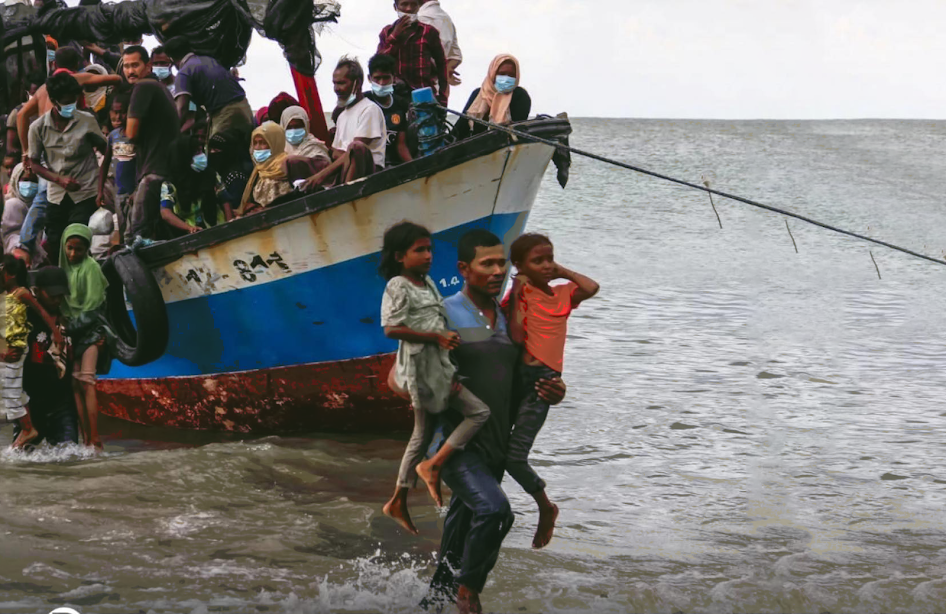Myanmar Spring Chronicle – June 11 View
(MoeMaKa, June 12, 2025):
The Rohingya Refugee Crisis and Rakhine State
The situation of over one million Rohingya refugees living under harsh conditions in Bangladesh has, over time, become a growing burden for the host country. Since their exodus in 2017, the crisis—rooted in the question of whether Rohingya can coexist with Rakhine ethnic communities, and whether they can gain recognition under Myanmar’s citizenship laws—has remained unresolved.
With the military coup in Myanmar, and the ongoing conflict between the junta and the Arakan Army (AA), which has resulted in the junta losing control of large areas in Rakhine, the dynamics of the issue have begun to shift. Simultaneously, Bangladesh is experiencing its own political transition, forming an interim government and preparing for upcoming elections.
The key stakeholders in resolving the Rohingya crisis include:
-
The Bangladesh government (which hosts the refugees),
-
The Arakan Army (AA) (now in control of much of northern and central Rakhine),
-
Rohingya community leadership and organizations,
-
The National Unity Government (NUG),
-
The military junta (which, despite losing territory, still holds formal diplomatic status internationally).
Other important actors include China, the United States, and international powers that influence regional dynamics, sometimes directly or indirectly through policy, diplomacy, or economic leverage.
In addition to repatriation efforts, issues such as the 2017 genocide, the ongoing ICJ case, and long-term justice remain deeply connected. Some Indian media outlets have even framed the situation in Rakhine as a proxy competition between China and the U.S., and suggest that the Bangladesh interim government may be aligning with U.S. interests.
Amid this backdrop, Bangladesh is now considering the AA as the dominant force in Rakhine, capable of controlling border security and tackling cross-border crimes such as terrorism, human trafficking, and narcotics. This notion has created diplomatic tension between Bangladesh and Myanmar’s junta.
Efforts to solve the refugee issue have become more complex as other perspectives and narratives emerge. In May, both the Myanmar ambassador and military attaché were recalled by the Bangladeshi government. A top security advisor to the Bangladesh government even publicly stated that it may be necessary to engage directly with the AA. The junta responded with diplomatic pressure, opposing any recognition of AA’s authority.
As these realities shift, how the AA communicates with locals, approaches the Rohingya issue, and manages relationships with displaced communities may determine whether the situation leads to resolution or prolonged conflict and suffering.
There is no simple or one-size-fits-all solution to the Rohingya issue in Rakhine. It requires a step-by-step approach focused on the root causes, particularly the deep mistrust between the Rakhine and Rohingya communities. While working to heal mutual suspicion, recent developments have further complicated matters—such as the junta forcibly recruiting Rohingya youth and using them as soldiers in battles in Maungdaw and Buthidaung.
Such actions not only worsen Rohingya suffering but also undermine efforts to build trust between the Rohingya and ethnic Rakhine populations.
Rohingya leadership must now seek engagement with the AA, and the AA must, in turn, ensure that the repatriation process upholds basic human rights and ethnic equality, treating Rohingya as rightful residents deserving of citizenship protections.
Given that the junta currently controls only about 10% of Rakhine, it no longer holds the practical authority to lead or resolve the refugee crisis. The primary responsibility for resolution now falls on the AA and Bangladesh, while also amplifying the voices of both displaced Rohingya and local communities.

